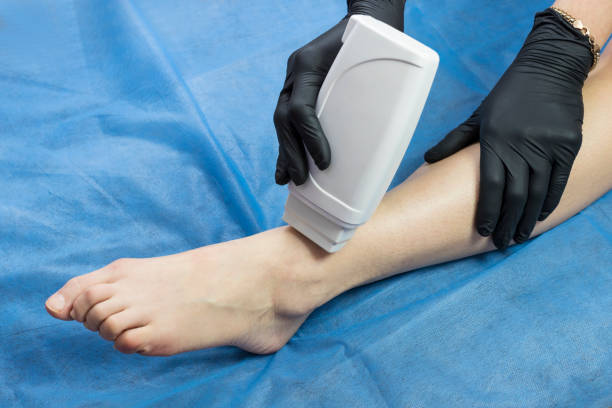Comprehensive Varicocele Care: Top Clinics in Abu Dhabi
1. Introduction
1.1. What is Varicocele?
Varicocele is a condition characterized by the enlargement of veins within the scrotum, akin to varicose veins found in the legs. This issue can disrupt normal blood flow, causing discomfort and potential health concerns. Understanding varicocele and its implications is crucial for effective treatment and management.
1.2. Importance of Comprehensive Varicocele Care
Comprehensive care is essential for managing varicocele effectively. Proper diagnosis, treatment, and follow-up can significantly impact health outcomes, particularly in terms of fertility and overall well-being.
2. Understanding Varicocele
2.1. Definition and Symptoms
Varicocele Treatment in Abu Dhabi involves the swelling of the veins that drain the testicles. Symptoms often include scrotal pain, a feeling of heaviness, and sometimes visible swelling. The severity of symptoms can vary, from mild discomfort to significant pain.
2.2. Causes and Risk Factors
The primary cause of varicocele is the malfunction of valves within the veins, leading to blood pooling and vein enlargement. Risk factors include genetic predisposition, age, and activities that increase abdominal pressure.
2.3. Diagnosis of Varicocele
Diagnosis typically involves a physical examination and may be confirmed through ultrasound imaging. This helps assess the size and extent of the varicocele and its impact on blood flow.
3. The Impact of Varicocele on Health
3.1. Effects on Male Fertility
Varicocele is a common cause of male infertility. The condition can impair sperm production and function, making it a significant concern for those seeking to conceive.
3.2. Impact on Testicular Health
Chronic varicocele can affect testicular health, potentially leading to testicular atrophy or reduced hormone levels, which might influence overall reproductive health.
3.3. Psychological and Social Effects
The condition can also have psychological impacts, including anxiety and diminished self-esteem, particularly if fertility issues arise. Addressing these effects is an important aspect of comprehensive care.
4. Top Clinics for Varicocele Treatment in Abu Dhabi
5. Comparing Varicocele Treatments
5.1. Surgical Options
5.1.1. Open Surgery
Open surgery for varicocele involves making an incision in the groin to remove or ligate the affected veins. This method is effective but may require a longer recovery period.
5.1.2. Laparoscopic Surgery
Laparoscopic surgery is a minimally invasive option involving small incisions and the use of a camera and special instruments. It typically results in a shorter recovery time and less discomfort.
5.2. Non-Surgical Options
5.2.1. Embolization
Embolization is a non-invasive procedure that blocks the affected veins using a catheter. This method is effective and usually involves a quicker recovery compared to surgery.
5.2.2. Lifestyle and Medication
Lifestyle changes and medications can help manage symptoms and improve overall health but may not address the underlying problem as effectively as surgical or procedural options.
6. Preparing for Varicocele Treatment
6.1. Initial Consultation
The initial consultation is crucial for discussing symptoms, treatment options, and personalized care plans. This step ensures that all aspects of the condition are addressed before proceeding.
6.2. Pre-Treatment Tests and Procedures
Pre-treatment tests, such as blood work and imaging, are essential for assessing the severity of the varicocele and planning the appropriate treatment approach.
6.3. What to Expect During the Procedure
Understanding what to expect during the procedure helps alleviate anxiety and prepares patients for the treatment process, including anesthesia and recovery.
7. Post-Treatment Care and Recovery
7.1. Immediate Post-Treatment Care
Post-treatment care involves managing any immediate side effects and following specific instructions for wound care or activity restrictions.
7.2. Long-Term Recovery and Follow-Up
Long-term recovery includes regular follow-up appointments to monitor progress and address any concerns that arise after the treatment.
7.3. Managing Potential Complications
Awareness of potential complications and how to manage them is important for ensuring a smooth recovery and addressing any issues promptly.
8. Conclusion
8.1. Summary of Key Points
Effective varicocele care involves a combination of accurate diagnosis, appropriate treatment, and comprehensive follow-up. Understanding the condition and available treatment options is key to achieving the best outcomes.
8.2. Final Recommendations
Choosing a top clinic and discussing all treatment options with a qualified specialist are crucial steps in managing varicocele. By doing so, patients can achieve optimal results and improve their quality of life.
9. FAQs
9.1. What is the best treatment for varicocele?
The best treatment for varicocele depends on individual circumstances, including the severity of the condition and patient preferences. Surgical and non-surgical options are both effective.
9.2. How long is the recovery period after varicocele surgery?
Recovery time varies but generally ranges from a few days to a few weeks, depending on the type of surgery and individual healing rates.
9.3. Are there non-surgical options for treating varicocele?
Yes, non-surgical options such as embolization and lifestyle changes can be effective, especially for patients with less severe symptoms.
9.4. How do I choose the right clinic for varicocele treatment in Abu Dhabi?
Choosing the right clinic involves considering factors such as the clinic’s reputation, available treatments, patient reviews, and the expertise of the medical team.
9.5. What are the potential risks and complications of varicocele treatment?
Potential risks and complications include infection, bleeding, and recurrence of the varicocele. Discussing these with your healthcare provider can help manage and mitigate risks.

